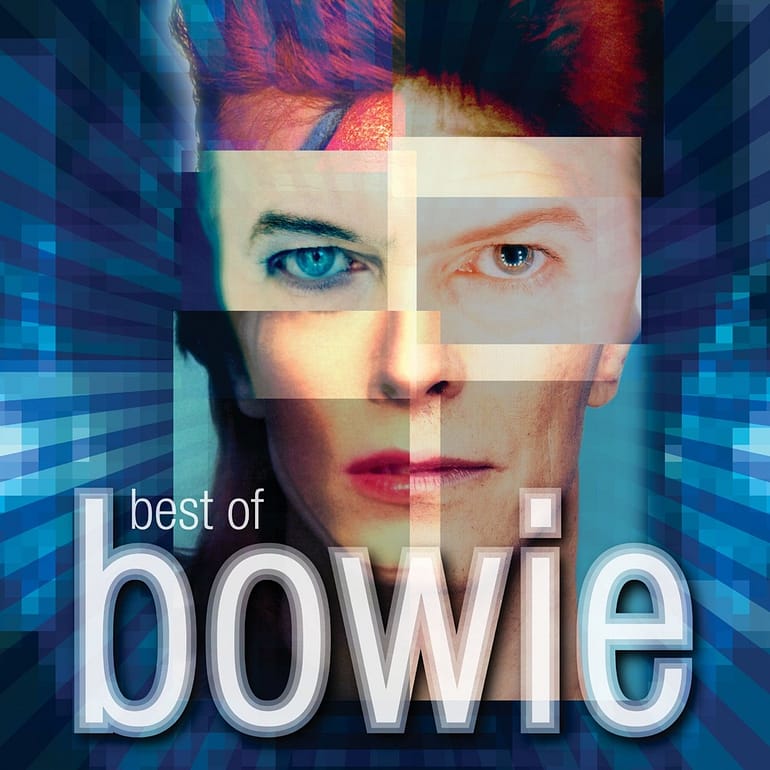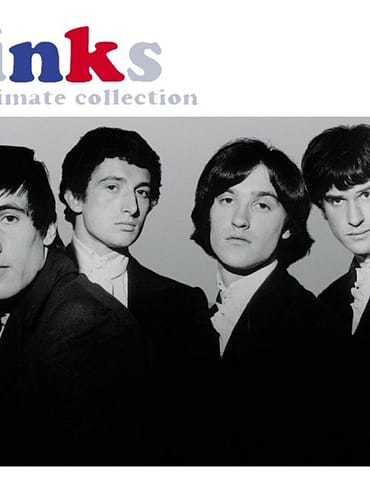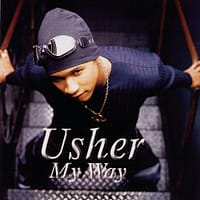-
play_arrow
Best of Music Radio Broadcasting 70 years of Best of Music
-
 play_arrow
play_arrow
TGI4 ™ - 70s Songs Live Show 22-08-19 Live Show with FrenchieG
-
 play_arrow
play_arrow
TGI4 ™ - 70s Songs Live Show 22-08-18 Live Show with FrenchieG
Page Contents
Introduction – David Bowie Under Pressure
David Bowie Under Pressure isn’t just a song title — it’s a lens through which to understand his extraordinary career. From glitter to grit, identity to addiction, Bowie lived in tension and thrived in transformation. He challenged not only the music world, but the very idea of what a rock icon could be.
“It was always very important to me, and it’s always been something that I’ve had a real push-pull relationship with all my life — the idea of being trapped.”
— David Bowie
A Cold Start in Brixton: 1947–1958
David Bowie was born David Robert Jones on 8 January 1947 in Brixton, London, amid post-war hardship and one of the coldest winters on record. Raised in modest surroundings, he developed early signs of artistic difference. A childhood fight would leave him with a permanently dilated pupil — creating his iconic “mismatched” eyes and launching the mythology of his visual legacy.
The Making of a Name: 1959–1969
By the age of 14, he formed his first band, The Konrads. After experimenting with various groups and identities, he finally rebranded as David Bowie — a name chosen to avoid confusion with Davy Jones of The Monkees. It was more than a rename. It was the birth of an idea.
Obsessed with reinvention, Bowie studied mime, practised Buddhism, and released Space Oddity in 1969. A haunting track about alienation, it climbed the UK charts just as Apollo 11 reached the moon. The man under pressure had finally launched.
Influences and Inspirations
Bowie’s creativity stemmed from an eclectic mix: American rock, soul, jazz, Jack Kerouac, Buddhist texts, and avant-garde theatre. His half-brother Terry played a pivotal role, introducing him to jazz clubs, outsider literature, and a world beyond South London. This patchwork of cultural influences built the foundation of a career defined by invention.
The Ziggy Stardust Era: 1970–1973
In 1972, Bowie gave birth to Ziggy Stardust — a flamboyant alien rockstar who blurred the line between music and theatre. Sequins, sexuality, and shock defined the era. Bowie didn’t just play Ziggy — he became him. But by July 1973, the persona overwhelmed the person, and Bowie shocked the world by “retiring” Ziggy on stage without warning, even to his band.
Aladdin Sane, Diamond Dogs, and The Thin White Duke: 1973–1976
In Ziggy’s wake came more alter egos: Aladdin Sane, Halloween Jack, and The Thin White Duke. Themes of dystopia, addiction, and psychological fragmentation permeated his music. Bowie became skeletal, emotionally vacant, and reportedly lived on milk, peppers, and cocaine. His success put him under increasing pressure — but still he created.
Berlin and Redemption: 1976–1979
Seeking clarity, Bowie moved to West Berlin. In this cold, divided city, he created the legendary Berlin Trilogy: Low, “Heroes”, and Lodger. With Brian Eno and Tony Visconti, Bowie broke musical boundaries, embracing experimental electronic textures. These records weren’t immediate hits — but today they’re hailed as some of his finest work.

Collaborations and Creative Sparks
David Bowie Under Pressure was born in 1981 during a spontaneous session with Queen in Montreux. Tensions ran high — Bowie clashed with bassist John Deacon, and Brian May nearly walked away. Yet from that chaotic energy came a timeless anthem about stress, survival, and human vulnerability.
He also collaborated with John Lennon (Fame), Nile Rodgers (Let’s Dance), and Iggy Pop during the Berlin years. Bowie was discerning — he famously turned down Coldplay and the Red Hot Chili Peppers, believing the songs weren’t good enough.
Let’s Dance and the Pop Renaissance: 1983–1987
Bowie returned to the mainstream in 1983 with Let’s Dance, a polished album that became a global phenomenon. The title track soared to number one. For many, this was their first encounter with David Bowie Under Pressure, now transformed into a sharp-suited pop star who still commanded mystery and depth.
Bowie on Screen: From Alien to Icon
Bowie’s visual presence was magnetic. In The Man Who Fell to Earth (1976), he portrayed an alien consumed by human emotion. In Labyrinth (1986), he enchanted a new generation as the Goblin King. His roles, like his music, challenged expectation and invited reflection.
Private Life and Public Shadows
In 1992, Bowie married supermodel Iman. Their relationship grounded him. Together they had a daughter, Alexandria. But public shadows lingered — including allegations about underage relationships from the 1970s. Though disputed and contextualised, they remain part of the complex discussion surrounding his legacy.
Reinvention and Rejection: 1988–2003
During this period, Bowie experimented freely. He formed Tin Machine, an industrial rock band where he refused to take centre stage. In 1998, he launched BowieNet, an innovative online portal years ahead of its time. Once again, Bowie was under pressure — and ahead of the curve.
The Final Chapter: 2004–2016
A heart attack in 2004 forced Bowie into near-silence. Many thought he’d retired. But on his 66th birthday, he dropped Where Are We Now? and stunned the world. His final album Blackstar, released two days before his death in 2016, was a cryptic, jazzy farewell — poetic, powerful, and deliberate.
Style and Identity: Bowie’s Visual Legacy
Bowie blurred the lines between gender, fashion, and identity. He wore dresses, painted his face, and embraced androgyny long before it became mainstream. He was a mirror for the misfits, and his boldness inspired generations.
Legacy and Impact: Sound and Vision
Bowie won 72 awards from 186 nominations. He was inducted into the Rock and Roll Hall of Fame, earned Grammys, and left behind a catalogue of over 25 studio albums. But his greatest legacy was proving that pressure can create diamonds — or, in his case, Blackstar brilliance.
Conclusion: The Artist Who Fell to Earth — and Rose Again
David Bowie Under Pressure is a story of transformation. He refused to be defined. He turned fear into fire, tension into art, and pressure into poetry. His evolution wasn’t just career strategy — it was a manifesto for authenticity in an inauthentic world.
FAQs – Quick Answers About David Bowie
What was David Bowie’s real name?
David Robert Jones.
Why did David Bowie have two different coloured eyes?
He didn’t. A school fight left one pupil permanently dilated, giving the illusion of different eye colours.
What is David Bowie’s most famous song?
Likely Space Oddity, Heroes, Let’s Dance, or Under Pressure — depending on the era.
When did David Bowie die?
10 January 2016, two days after his 69th birthday.
What were David Bowie’s alter egos?
Ziggy Stardust, Aladdin Sane, The Thin White Duke, Halloween Jack, and others.
Further Resources on David Bowie Under Pressure
If you’re inspired by the journey of David Bowie Under Pressure, explore more through the following curated resources:
These pages offer additional insights into Bowie’s creative genius, legacy, and the story behind Under Pressure.
Related posts on Best of Music Radio: “David Bowie Under Pressure” in context
100 Pop & Rock Legendary Songs from the 1960s added to a new playlist today
Queen/David Bowie Under Pressure Lyrics
“Under Pressure”
Dum bum ba be
Doo buh dum ba beh behPressure: pushing down on me
Pressing down on you, no man ask for
Under pressure that burns a building down
Splits a family in two
Puts people on streetsUm ba ba be
Um ba ba be
De day da
Ee day daThat’s OKThat’s the terror of knowing
What this world is about
Watching some good friends screaming
“Let me out!”Tomorrow gets me higher
Pressure on people, people on streetsDay day de mm hm
Da da da ba ba
OKChippin’ around, kick my brains ’round the floor
These are the days: it never rains but it poursEe do ba be
Ee da ba ba ba
Um bo bo
Be lapPeople on streets
Ee da de da de
People on streets
Ee da de da de da de daIt’s the terror of knowing
What this world is about
Watching some good friends screaming
“Let me out!”
Tomorrow gets me higher, higher, high!
Pressure on people, people on streets
Turned away from it all like a blind man
Sat on a fence, but it don’t work
Keep coming up with love, but it’s so slashed and torn
Why, why, why!?
Love, love, love, love, love
Insanity laughs under pressure
We’re breaking
Can’t we give ourselves one more chance?
Why can’t we give love that one more chance?
Why can’t we give love, give love, give love, give love, give love, give love, give love, give love, give love?
‘Cause love’s such an old-fashioned word
And love dares you to care for the people on the edge of the night
And love dares you to change our way of caring about ourselves
This is our last dance
This is our last dance
This is ourselves
Under pressure
Under pressure
Pressure
David Bowie Under Pressure interesting facts
- A duet about how the pressure on our lives makes us nearly crumble. The collaboration emerged from a hectic day of partying and composing by David Bowie and the four members of Queen.
- The bass line, performed by Queen bassist John Deacon, was famously sampled by Vanilla Ice in his 1990 song “Ice Ice Baby.” Ice added only one different note, and tried to pass it as an entirely different composition. Things were tense around “Ice Ice Baby”—the song went to #1 but Ice hadn’t credited Queen or Bowie. Queen and Bowie sued and won—they received a settlement and had their names added to the writing credits.
-
“Under Pressure” evolved from a jam session with David Bowie and the band at their studio in Montreux, Switzerland. The scat singing on the song proves that it was born from an improvisation.
-
Brian May said to Mojo magazine in October 2008, “It was hard, because you had four very precocious boys and David, who was precocious enough for all of us. David took over the song lyrically. Looking back, it’s a great song but it should have been mixed differently. Freddie and David had a fierce battle over that.”
-
The earlier version of this song without David Bowie was called “Feel Like”. It was written by Queen drummer Roger Taylor and is still available in bootleg form.
-
This song reached number one on the UK Singles Chart, becoming the band’s second number-one hit in their home country after 1975’s “Bohemian Rhapsody”.
-
The song was the third number-one hit on the UK Singles Chart for David Bowie.
-
VH1 ranked “Under Pressure” at number 31 on its list of 100 Greatest Songs of the ’80s.
-
This track has been voted the second best collaboration of all time in a poll by the Rolling Stone magazine.
-
On the 20th of March 2018, this song was certified two times “Platinum” in the USA by the RIAA for over two million digital download equivalent units.
You may also like some of Best Of Music’s Song Spotlights
- Lola by The Kinks – A 1970s Rock Classic | Best of Music Radio
- Song Spotlight: “The Fool on the Hill” by The Beatles
- Song Spotlight: “Long Road to Ruin” by Foo Fighters
Hashtags
#BOMR #BOMR_Album_Lets_Dance_David_Bowie #BOMR_Artists_David_Bowie #BOMR_Berlin_Trilogy_David_Bowie #BOMR_Biography_David_Bowie #BOMR_Career_David_Bowie #BOMR_Collaborations_David_Bowie #BOMR_David_Bowie_Under_Pressure #BOMR_GlamRock #BOMR_Influencer_David_Bowie #BOMR_Legacy_David_Bowie #BOMR_Revival_David_Bowie #BOMR_Rock #BOMR_Story_David_Bowie #BOMR_Visual_Legacy_David_Bowie #BOMR_Ziggy_Stardust_David_Bowie
#BestOfMusicRadio #BestOfMusicRadio_wwwDotBestOfMusicRadioDotCom #FrenchieG #FrenchieGrignon (#Mauritius) #FrenchiesMusic
💬 Join the Conversation
We’d love to hear your thoughts on David Bowie’s creative journey.
Which era or song resonates most with you?
Share your reflections in the comments below.
Written by: Best Of Music Radio (Admin)
BOMR_Biography_David_Bowie David_Bowie_Under_Pressure BOMR BOMR_Career_David_Bowie FrenchieGrignon_Mauritius BestOfMusicRadio BOMR_Collaborations_David_Bowie BOMR_Rock BOMR_GlamRock #FrenchieG BOMR_Influencer_David_Bowie #FrenchiesMusic BOMR_Legacy_David_Bowie BOMR_Revival_David_Bowie BOMR_Story_David_Bowie BOMR_Album_Let's_Dance_David_Bowie BOMR_Visual_Legacy_David_Bowie BOMR_Artists_David_Bowie BOMR_Ziggy_Stardust_David_Bowie BOMR_Berlin_Trilogy_David_Bowie BestOfMusicRadio_wwwDotBestOfMusicRadioDotCom
Similar posts
Recent Comments
Featured post
Latest posts
Current show
Morning Show: Decades Playlist
Our morning show will get your day started.
Our show is unique due to its use of cutting-edge audio technology. Furthermore, the proprietary software not only selects but also seamlessly blends tracks by matching music keys and BPMs. As a result, you enjoy smooth transitions and perfect harmony. It’s like having a personal DJ who knows precisely what you need to hear. Past & future song broadcast list from the 1950s to 2022 will soon be announced on our website. In the meantime, bookmark this page and come back regularly to join us in this nostalgic journey. Everyday from 06:00 - 10:00 (+4GMT Mauritian Time). More music, less talk! Music You'll Hear Nowhere Else But Here!
closeUpcoming shows
All-Day Playlist: Hits Across the Decades
Auto DJ: Our proprietary music algorithm will provide you with the Best of Music!
10:00 am - 4:00 pmBest of Music: 1990s – Music Played in the 1990’s Popular Music From the 90s
Auto DJ: Our proprietary music algorithm will provide you with the Best of Music from the 50s!
4:00 pm - 6:00 pmBest of Music: 1980s – Music Played in the 1980’s Popular Music From the 80s
Auto DJ: Our proprietary music algorithm will provide you with the Best of Music!
6:00 pm - 8:00 pmAll-Day Playlist: Hits Across the Decades
Auto DJ: Our proprietary music algorithm will provide you with the Best of Music!
8:00 pm - 6:00 amMorning Show: Decades Playlist
Our morning show will get your day started.
6:00 am - 10:00 amChart
-
Morning Show: Decades Playlist
Our morning show will get your day started.
Our show is unique due to its use of cutting-edge audio technology. Furthermore, the proprietary software not only selects but also seamlessly blends tracks by matching music keys and BPMs. As a result, you enjoy smooth transitions and perfect harmony. It’s like having a personal DJ who knows precisely what you need to hear. Past & future song broadcast list from the 1950s to 2022 will soon be announced on our website. In the meantime, bookmark this page and come back regularly to join us in this nostalgic journey. Everyday from 06:00 - 10:00 (+4GMT Mauritian Time). More music, less talk! Music You'll Hear Nowhere Else But Here!
close Chart
-
1
play_arrowYou Make Me Wanna... (Extended Version)
USHER
-
-
play_arrow
All By Myself (Single Edit) Eric Carmen
-
-
-
play_arrow
Bohemian Rhapsody (2011 Remaster) Queen
-
-
Top popular
-
New Music Releases (NMR) 2022-02-21
New Music Releases from 22-02-21 Show
today2022-02-21 10262 1458
Featured Posts
Pages
© 2025 Best of Music Radio - Mauritius

























